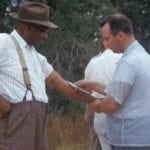 Crime
Crime  Crime
Crime  Technology
Technology 10 Hilariously Over-Engineered Solutions to Simple Problems
 Miscellaneous
Miscellaneous 10 Ironic News Stories Straight out of an Alanis Morissette Song
 Politics
Politics 10 Lesser-Known Far-Right Groups of the 21st Century
 History
History Ten Revealing Facts about Daily Domestic Life in the Old West
 Weird Stuff
Weird Stuff 10 Everyday Products Surprisingly Made by Inmates
 Movies and TV
Movies and TV 10 Actors Dragged out of Retirement for One Key Role
 Creepy
Creepy 10 Lesser-Known Shapeshifter Legends from Around the World
 Animals
Animals 10 Amazing Animal Tales from the Ancient World
 Gaming
Gaming 10 Game Characters Everyone Hated Playing
 Crime
Crime 10 Terrifying Serial Killers from Centuries Ago
 Technology
Technology 10 Hilariously Over-Engineered Solutions to Simple Problems
 Miscellaneous
Miscellaneous 10 Ironic News Stories Straight out of an Alanis Morissette Song
Who's Behind Listverse?

Jamie Frater
Head Editor
Jamie founded Listverse due to an insatiable desire to share fascinating, obscure, and bizarre facts. He has been a guest speaker on numerous national radio and television stations and is a five time published author.
More About Us Politics
Politics 10 Lesser-Known Far-Right Groups of the 21st Century
 History
History Ten Revealing Facts about Daily Domestic Life in the Old West
 Weird Stuff
Weird Stuff 10 Everyday Products Surprisingly Made by Inmates
 Movies and TV
Movies and TV 10 Actors Dragged out of Retirement for One Key Role
 Creepy
Creepy 10 Lesser-Known Shapeshifter Legends from Around the World
 Animals
Animals 10 Amazing Animal Tales from the Ancient World
 Gaming
Gaming 10 Game Characters Everyone Hated Playing
10 Psychological Experiments That Will Blow Your Mind
The study of the human mind is fascinating. Understanding why we behave in the way we do could be the key to unleashing the full potential of the human race. So it is inevitable, perhaps, that researchers push at the boundaries of acceptability when devising psychological experiments.
Sometimes though, they go too far, and their eagerness to understand comes at the expense of other people’s safety and well-being. At best, the following psychological experiments left their participants hurt and upset (and sometimes traumatized). At worst, they cost lives.
10 The Monster Experiment

In 1939, Wendell Johnson and his student Mary Tudor began experiments to determine whether stuttering was a learned behavior and, if so, whether it could be induced. In order to test this, Johnson recruited 22 subjects. All were orphaned children or those given up by destitute parents. Johnson decided not to bother with niceties like informed consent.[1]
Ten of the 22 children had preexisting stammers, and the other 12 had no speech impediments. Half of those with stutters were repeatedly told that their speech was fine to see whether this cured them. It didn’t. The 12 normal-speaking children were divided into two groups. Half were told that their speech was normal and the other half that they had an impediment, despite their speech actually being normal.
This latter group did not produce stammerers, as Johnson had expected, but exhibited severe anxiety with lasting effects. Uneasy, Mary Tudor went back to the orphanage to try to undo the damage, but it was too late. One of her subjects wrote to her and called her a monster, saying, “I remember your face, how kind you were and you looked like my mother, but you were there to destroy my life.”
9 The Stanford Prison Experiment
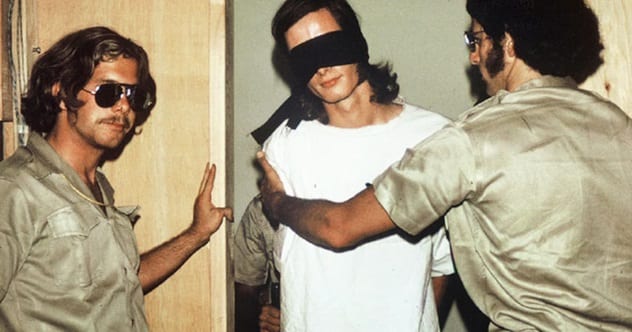
The Stanford Prison Experiment was both masterful and deeply disturbing.
In 1971, Professor Philip Zimbardo constructed a mock prison and recruited students to play the parts of guards and prisoners in an effort to discover whether the brutality experienced by convicts in American prisons was the result of the prison conditions or the personalities of the wardens and convicts.
The 24 participants were randomly assigned the role of prisoner or guard. Prisoners were arrested without warning, fingerprinted, and blindfolded before being driven to the makeshift prison, where they were stripped naked, “deloused,” and given uniforms with their prison number on. Guards wore military-style uniforms and dark glasses and carried whistles and wooden clubs. The guards were instructed to do whatever they thought necessary to control the inmates.
Within hours, the guards and prisoners began to behave confrontationally. Guards imposed punishments, raided cells, and woke prisoners up for roll call during the night. On day two, the prisoners rebelled, barricading themselves in their cells with their beds. Guards called for reinforcements, sprayed fire extinguishers at the prisoners, stripped them naked, and removed their beds from their cells.
After their initial rebellion, the prisoners became more submissive, but the guards’ aggression increased. The experiment was due to last two weeks, but so great was the change in behavior that the study was abandoned after five days for fear of injury and long-term damage to participants.[2]
8 UCLA Schizophrenia Experiments

In 1983, researchers at UCLA began looking at the signs of relapse in schizophrenia patients. They recruited large numbers of diagnosed schizophrenics to observe signs of deterioration when their medications were reduced. What made the study controversial was that the researchers often reduced the medications themselves, and when patients showed signs of severe relapse, they did not step in to protect them.
Antonio Lamadrid was one of the subjects for several years. After being well for a year, his medication was reduced. He quickly became ill and talked of suicide. Lamadrid killed himself in 1991 by jumping from the roof of a UCLA building.[3]
Antonio Lamadrid’s death raised the question of informed consent among the mentally ill. A lawsuit found the university not responsible for Lamadrid’s death but concluded that they had violated key aspects of informed consent rules governing experimentation on human subjects.
7 Little Albert
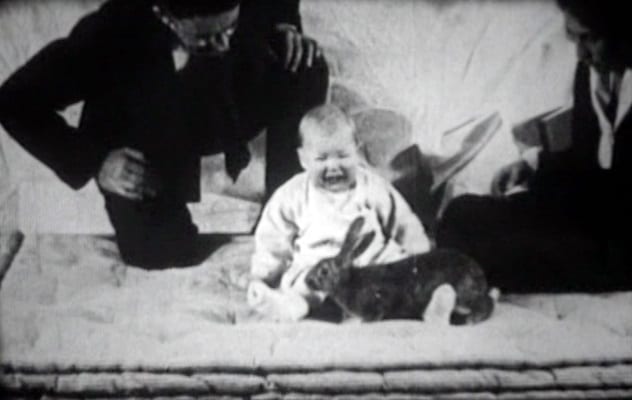
In the late 1910s, behavioral scientist John B. Watson was studying whether emotional reactions could be conditioned in humans, after the manner of Pavlov’s dogs. One of his subjects was a baby named Albert, aged nine months. Albert was exposed to a series of stimuli, including a white rat, a rabbit, a monkey, masks, and burning newspapers. Initially, Albert showed no fear of any of these objects.
Then, as Albert was exposed to the rat, Watson made a loud noise by hitting a metal pipe with a hammer, whereupon Albert cried. After being repeatedly presented the white rat followed by the loud noise, Albert began to cry as soon as he saw the rat.
Watson must have conducted the experiment many times because he collected enough data to discover that not only did the kid cry at white rats, but he also began to cry at anything that might possibly look like a rat, including a variety of white objects and an equally large assortment of furry objects (including, at one point, a Santa Claus beard).[4] Even those objects which he had previously played with began to frighten him if they bore any resemblance to a rat (or if they were handed to him by a man wielding a hammer).
Watson didn’t bother to decondition Little Albert at the end of the experiment, and it is unknown whether his fear of vermin, loud noises, or psychologists remained with him. Sadly, Albert died at the age of six. It is unknown whether his mother, who was paid a grand total of $1 for his participation, ever realized what it was they were doing when they came to play with her son.
6 Lost In A Mall

The work of Elizabeth Loftus is controversial, not so much for the methods she has used but for the anger and hurt her work has caused. Loftus, an eminent professor of psychology, has conducted a number of experiments that examine the imperfect recall of memory and, in particular, how it is possible to implant false memories into subjects. This has caused furor among those who believe that they have recovered deeply repressed memories of abuse.
Participants in the study believed that they were taking part in an experiment about childhood memories. They and their relatives were asked to provide stories. A booklet was presented to the subject recounting three true memories and a false one supposedly provided by the relative. The subjects were then asked to contribute their memory of the incident and to say if they didn’t remember it.
Further interviews over the following weeks discussed the fictional incident, until finally subjects were asked to say how well they remembered being lost in the mall.[5]
In many cases, it was noticed that the false memories were actually clearer and more “real” than the genuine ones. Loftus’s work appeared to prove that it is possible to recover memories of things that never happened, though, of course, this doesn’t prove that it isn’t also possible to repress and then uncover memories of things that did happen, which just goes to show that the brain is a tricky thing.
5 The Bystander Effect
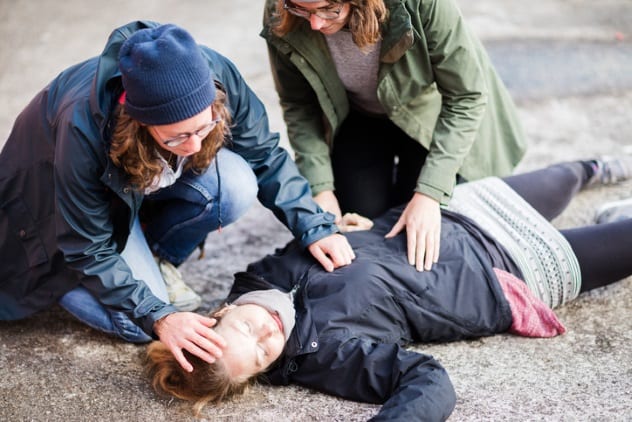
The phenomenon of the bystander effect was first identified in the late 1960s by psychologists Bibb Latane and John Darley, following the murder of Kitty Genovese in 1964. Genovese was stabbed to death outside her apartment, reportedly in full view of 38 of her neighbors, who did nothing to intervene. (The number of witnesses has been disputed.) Latane and Darley hypothesized that this was caused by a diffusion of responsibility, or bystander effect, where people are less likely to intervene when others around them do not intervene.
In order to test their hypothesis, Latane and Darley conducted an experiment where students were sometimes alone, and sometimes in groups of varying size, when an actor pretended to have an epileptic seizure. It was noticed that those students who were alone with the patient sought help 85 percent of the time. (Goodness knows what the other 15 percent did.) But that number decreased to 62 percent and then only 31 percent as the number of other bystanders increased.
The larger the group, the greater the indecision and the more bystanders relied on “someone else” to do something.[6] Unfortunately, researchers do not seem able to find a cure for this kind of paralysis that overcomes people, but thankfully some people are immune. Take Hugo Alfredo Tale-Yax. In early 2010, Yax witnessed a woman being attacked by a man with a knife and stepped in to save her. In the process, he was stabbed several times.
Yax was not as fortunate as the woman he saved. He lay dying on the pavement for more than an hour, while dozens of people walked by. Some people stopped to look at him, and one person even videoed his death. However, by the time someone finally called emergency services, Hugo Yax was dead.
4 Jane Elliot Racism Experiment

The only experiment on this list not to be carried out by a qualified psychologist, Jane Elliot’s racism experiment has nevertheless caused controversy and sparked debate for 50 years.
In the aftermath of Martin Luther King’s assassination, Elliot decided to deliver a class on racism to her third-grade students. She separated the children by eye color and, citing some spurious science, declared that people with brown eyes were “better” than people with blue eyes.
By lunchtime, the students had formed groups, the blue eyes against the brown eyes, and they began to identify characteristics of blue-eyed people—lazy, stupid, clumsy etc. Blue-eyed students who were normally confident learners suddenly started to make mistakes, and brown-eyed students grew in confidence, at least until the following week, when the situations were reversed.[7]
Elliot has repeated this experiment numerous times in the years since and noticed that when the roles were reversed, the now-dominant students were less judgemental than their classmates, perhaps because they had experienced discrimination and didn’t like it. Elliot’s techniques are not without criticism, and she received much flak from parents who believed that the experiments were cruel “to white children.”
3 Project MKULTRA

The CIA have funded a number of psychological experiments, though they haven’t always gotten round to reading the ethics forms. One notable example was Project MKULTRA. Set up in 1953, it was intended to look at the use of biological and chemical materials in altering human behavior, as used by the Russians. However, the purview soon widened, and researchers began testing illegal drugs on thousands of American citizens who were unable to give consent.
Researchers began to look at how to deepen the effects of hypnosis, how to induce amnesia, and which drugs would allow individuals to withstand torture under interrogation. Hmm; wonder how they tested that?
The test subjects were mostly convicts, sex workers, and, most shockingly, the terminally ill. Among other drugs, LSD was given to participants without their knowledge, causing great distress. At least two people died as a result of their participation in the program, and many more were left with lasting aftereffects.
The true scope of the research project may never be known, as thousands of records were destroyed in 1977, and despite an inquiry and several lawsuits, no one has ever been held accountable for the work done on Project MKULTRA.[8]
2 The Robbers Cave Experiment
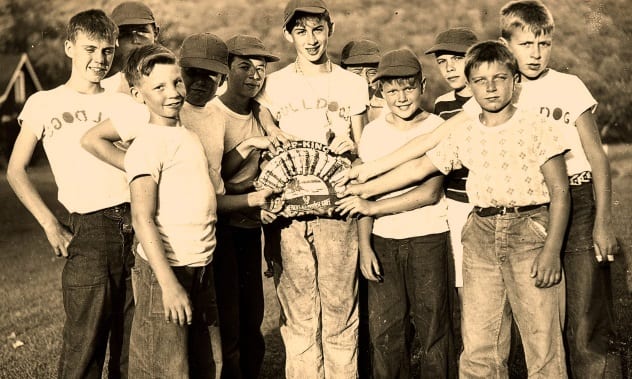
In 1954, Muzafer Sherif devised an experiment that he hoped would demonstrate how the hostility between different groups could be overcome by working together against a common threat. His first effort was a dismal failure when he took two groups of boys to a summer camp and first tried to get them to work against each other. Having met their enemies, the boys were disposed to like them, and the experiment failed.
He repeated the experiment and took care to ensure that the two groups of boys did not meet until their loyalties were fixed. His theory was that conflict would arise when the groups competed for the same resources. He allowed each group time to bond with their own and then introduced a number of competitive activities that gave special privileges or prizes to the winners. Each group immediately became invested in winning the competition for their “team.”
Following this, Sherif arranged for one team to seem to gain an unfair benefit, such as organizing a picnic where one group arrived first and ate all the food. This increased tensions further, and the boys began to become more aggressive, raiding each others’ tents, stealing each others’ possessions, and intimidating their rivals. They became so physically threatening at one point that the researchers had to separate them.[9]
At this point, Sherif engineered a forest fire and sat back and watched as the boys initially worked in separate groups to put the fire out, before finally coming together to form a human chain to collect water to extinguish it. His experiment was said to have demonstrated “realistic conflict theory.” However, there have been some critics of his test, both because of the lack of informed consent and some evidence that the boys were manipulated in their behavior.
Plus, you know, Sherif lit a forest fire and left 22 kids to get on with putting it out.
1 The Milgram Experiment
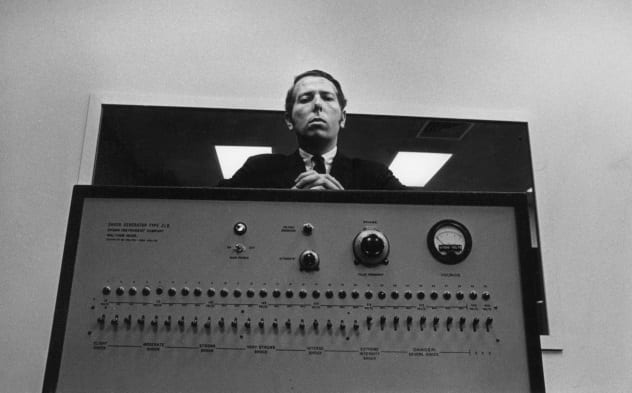
In one of the most famous psychological experiments ever, in the early 1960s, Stanley Milgram set out to explore the boundaries between obedience to authority and personal conscience, after watching the Nuremberg Trials, during which former Nazis charged with atrocities claimed that they were just following orders.
He was interested in seeing how far people would obey instructions, even if they involved hurting other people. Subjects were first introduced to their partner in the experiment so that they could meet them as a human being. They were then asked to draw lots to see who was to play the teacher and who was the student. In fact, the “student” was an actor hired for the study.
The teachers were asked to read a series of questions to the student, who was in another room but could be communicated with verbally. The teacher sat in front of a machine with an electric generator and a row of switches marked at increasing voltages from 15 to 450 volts. The teachers were instructed to ask the learners a series of questions and to apply an electric shock each time they got an answer wrong. Each wrong answer meant an increased shock intensity. (The shocks weren’t real, hence the actor.)
All the participants in the trial administered shocks to the “student” of up to 300 volts, and two thirds of them continued all the way to 450 volts despite the fact that the higher voltages were labeled as extremely dangerous.[10]
From his results, Milgram concluded that people are liable to follow orders where they perceive the person giving the instructions to have authority over them, even past the point where their own conscience is telling them they should stop.
Ward Hazell is a writer who travels, and an occasional travel writer.
Read more about the study of the human mind on 10 Common Misconceptions About Psychology and 10 Shocking Myths Of Modern Psychiatry.








